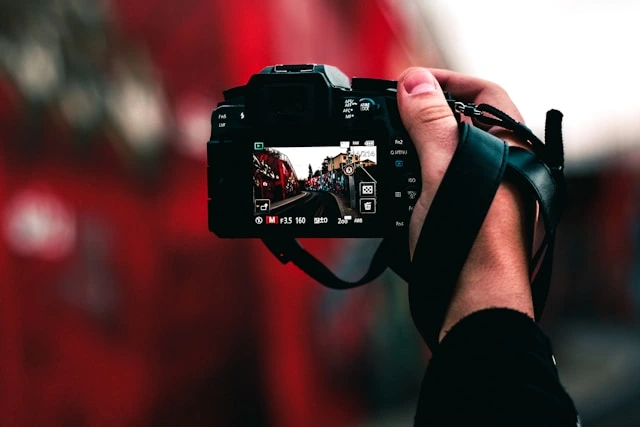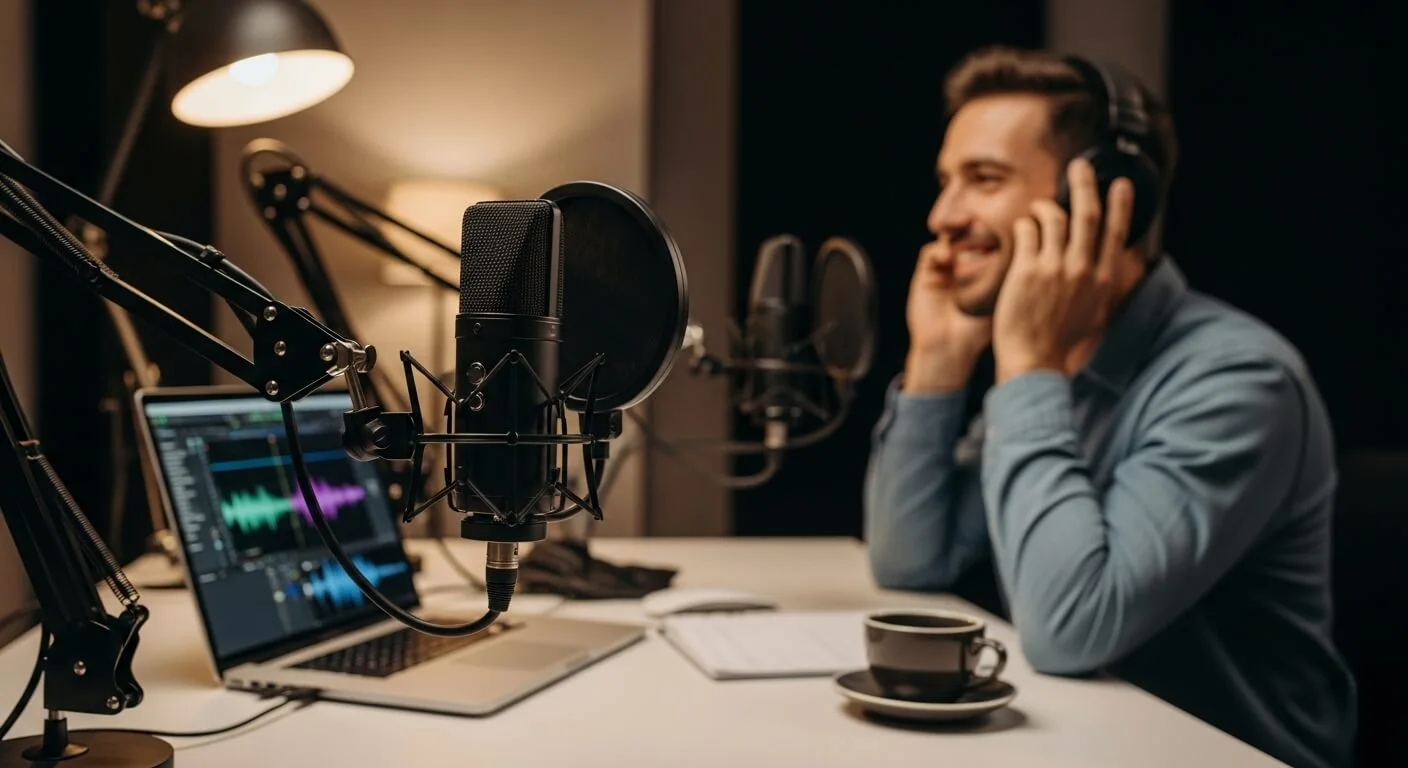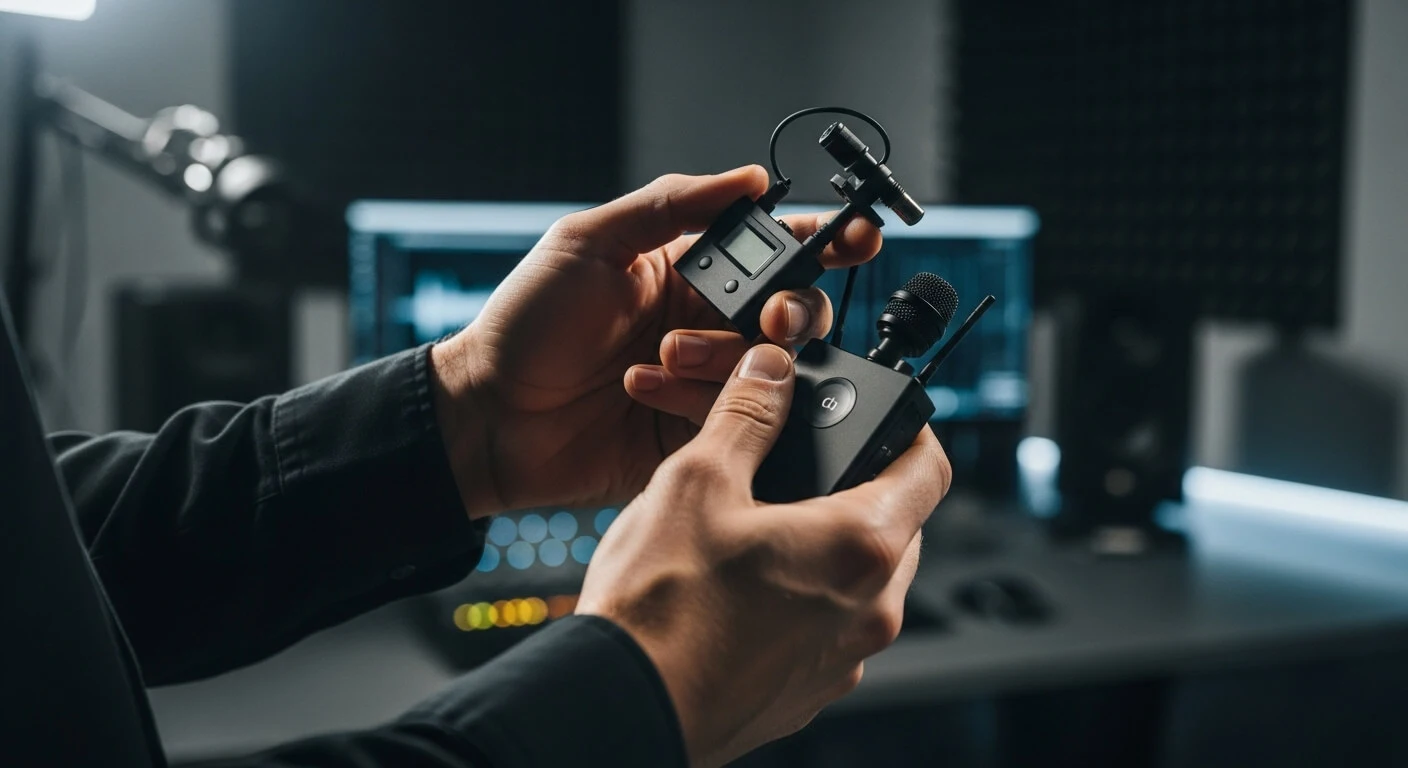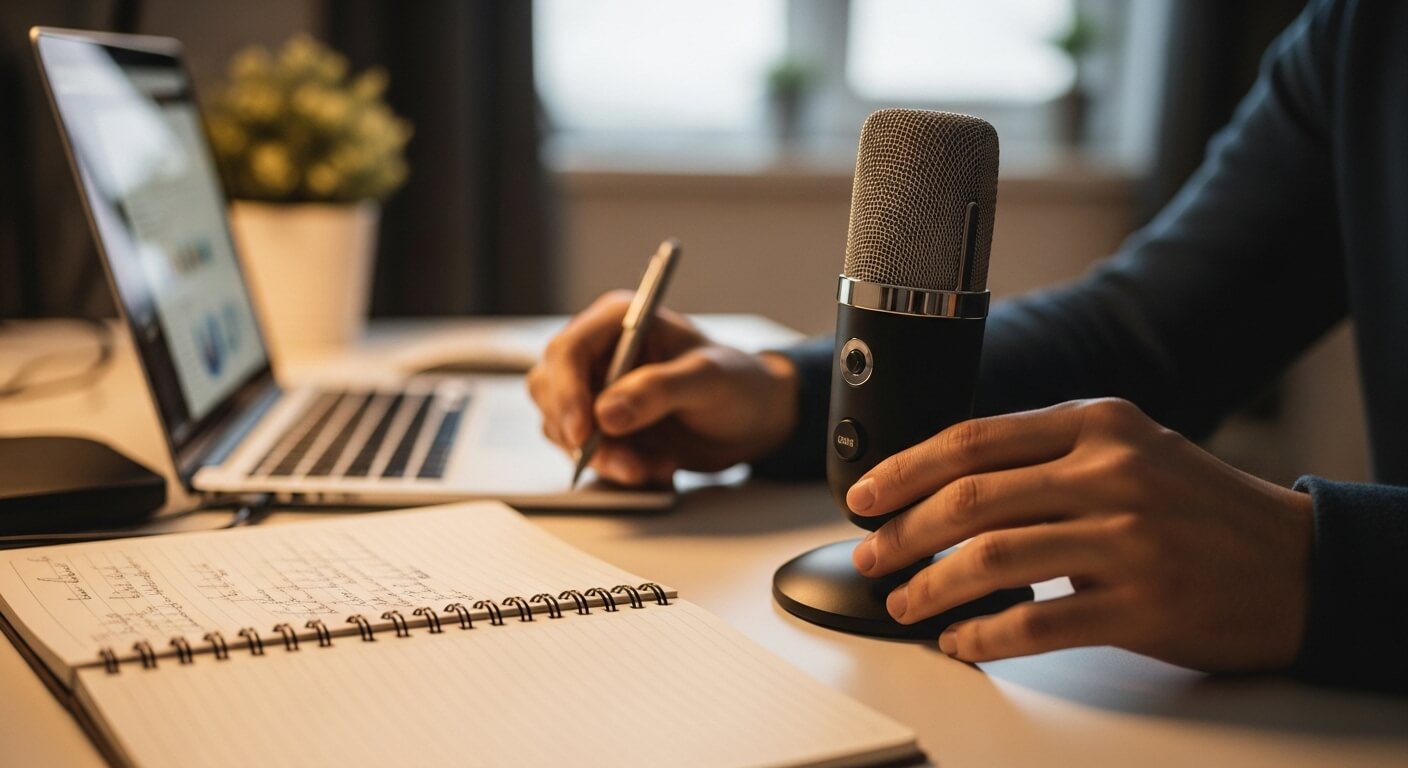Best Cameras for Social Media Marketing – Reviews & Buyer’s Guide: Did you know online videos are expected to make up more than 82% of all consumer internet traffic? In a world where visual content is king, the quality of your photos and videos can make or break your social media strategy. While smartphones have come a long way, they simply can’t match the depth, clarity, and professional polish of a dedicated camera.
This guide cuts through the noise to reveal the best cameras for social media marketing in 2025. We’ll dive deep into our top picks, drawing from hands-on experience and real user feedback to help you find the perfect tool to elevate your brand. Whether you’re creating viral TikToks, stunning Instagram grids, or engaging YouTube content, the right camera is your ultimate cheat code for stopping the scroll.
Table of Contents
ToggleBest Cameras for Social Media Marketing

Sony ZV-E10: The Best All-Around Camera for Social Media Content
If you’re looking for one camera that can do it all for social media without a staggering price tag, the Sony ZV-E10 is consistently the top recommendation. It perfectly blends the ease-of-use of a point-and-shoot with the power and versatility of an interchangeable-lens system. This makes it an ideal starting point for serious content creators and a reliable workhorse for seasoned marketers. It’s built from the ground up for creators, with features that directly address the pain points of filming vlogs, tutorials, and product showcases.
Read More: 5 Best Affordable Laptops for YouTube Video Editing

From my experience, the ZV-E10 is the logical next step for anyone who has outgrown their smartphone. The ability to change lenses is its superpower. Start with the versatile 16-50mm kit lens for general use, then add a prime lens with a wide aperture (like a f/1.8) to get that beautiful, blurry background (bokeh) that makes your subjects pop—a look that’s incredibly difficult to replicate authentically on a phone. This adaptability means the camera can grow with your skills and brand needs, from wide-angle studio shots to detailed product close-ups. It’s not just a camera; it’s the foundation of a content creation ecosystem. The autofocus system, inherited from Sony’s more expensive models, is lightning-fast and reliable, which is a lifesaver when you’re filming yourself and can’t check the focus manually.
Buy At The Best Price
Key Features & Specifications
- Sensor: 24.2MP APS-C Exmor CMOS Sensor
- Video Resolution: 4K up to 30fps (from 6K oversampling), 1080p up to 120fps (for smooth slow-motion)
- Autofocus: Fast Hybrid AF with 425 phase-detection points; Real-time Eye AF (for humans and animals) and Real-time Tracking
- Screen: 3.0-inch, 921k-dot vari-angle (fully articulating) touchscreen LCD
- Audio: Built-in 3-capsule directional microphone with included windscreen; 3.5mm microphone jack and headphone jack for monitoring audio
- Special Features: Product Showcase Setting (instantly shifts focus from face to object), Background Defocus button, Soft Skin Effect
- Connectivity: Wi-Fi, Bluetooth, USB-C (for charging, data transfer, and live streaming)
- Weight: 343g (body only)
- Lens Mount: Sony E-mount
- Current Rating: 4.6 out of 5 stars
- Total Reviews: Over 2,500 ratings
More: Best Windows Laptop for Video Editing – Reviews & Buyer’s Guide
What Real Users Are Saying: A Summary
After analyzing dozens of user reviews, a clear picture emerges.
- Praise for Autofocus: Users consistently rave about the “magic” of Sony’s Real-time Eye AF. One reviewer, a solo creator, called it “a complete game-changer” because they could finally move around freely on camera without ever worrying about being out of focus.
- Love for the Flip Screen: The fully articulating screen is a massive win. A fashion vlogger mentioned it’s “essential for framing vertical TikTok videos and checking my look before hitting record.”
- Excellent Audio Quality: Many are surprised by the quality of the built-in directional microphone, noting that with the included windscreen, it’s often good enough for vlogging without an external mic, simplifying their setup.
- Minor Gripes on Battery: A common concern is the battery life. Several users recommend buying at least one or two spare batteries (NP-FW50) for a full day of shooting.
- Missing In-Body Stabilization: Some users wish it had In-Body Image Stabilization (IBIS). However, many acknowledge that using a lens with Optical Steady Shot (OSS) or Sony’s “Active” digital stabilization largely solves this for vlogging.
Pros:
- Stunning Image Quality: The large APS-C sensor delivers professional-looking photos and videos with excellent low-light performance.
- World-Class Autofocus: Sony’s Eye AF is incredibly reliable, keeping you sharp and in focus effortlessly.
- Interchangeable Lenses: Offers immense creative flexibility to adapt to any shooting scenario.
- Creator-Focused Features: The Product Showcase and Background Defocus buttons are genuinely useful shortcuts.
- Excellent Audio Options: A great built-in mic plus jacks for both external mics and headphones.
Cons:
- No In-Body Image Stabilization (IBIS): Relies on lens stabilization or digital cropping, which can be a drawback for certain handheld shots.
- Noticeable Rolling Shutter: Fast panning movements can cause some “jello” effect in 4K video.
- Average Battery Life: Carrying a spare battery is highly recommended for long shoots.
Personal Insight & Recommendation
As someone who juggles creating YouTube tutorials, Instagram Reels, and high-quality product photos, the ZV-E10 hits the sweet spot. What I appreciate most is its efficiency. The dedicated buttons for blurring the background or showcasing a product save me time in post-production. It’s a camera designed by engineers who clearly listened to what creators actually need. If you’re ready to make a serious investment in your social media presence and want a camera that won’t hold you back, this is the one.
Click here to check the current price of the Sony ZV-E10 on Amazon
Canon EOS R8: The Best Camera for Hybrid Photo & Video Quality

For social media marketers who demand the absolute best in both photography and videography, the Canon EOS R8 is a revelation. It packs the powerful full-frame sensor and autofocus system of its much more expensive sibling (the EOS R6 Mark II) into a smaller, more affordable body. This is the camera you choose when your brand requires cinematic video for YouTube and simultaneously needs crisp, high-resolution photos for your Instagram feed, website, and ad campaigns.
Read: 3 Best Budget Laptops for Video Editing : An Expert Review & Buyer’s Guide
A full-frame sensor is the key differentiator here. It’s physically larger than the APS-C sensor in the ZV-E10, which translates to superior low-light capability, richer colors, and a more pronounced and natural background blur (bokeh). When I tested the R8, the difference in image depth was immediately apparent. Photos felt more three-dimensional, and videos had a truly professional, film-like quality. Canon’s color science is legendary for its pleasing skin tones, and the R8 delivers beautifully right out of the camera, saving you editing time. The autofocus, powered by dual-pixel technology, is incredibly “sticky” and intuitive, tracking subjects with confidence. It’s the perfect hybrid shooter for the marketer who wears many hats.
Buy At The Best Price
Key Features & Specifications
- Sensor: 24.2MP Full-Frame CMOS Sensor
- Video Resolution: 4K up to 60fps (uncropped, from 6K oversampling), 1080p up to 180fps
- Autofocus: Dual Pixel CMOS AF II with 1053 AF zones; advanced subject detection (People, Animals, Vehicles)
- Screen: 3.0-inch, 1.62m-dot vari-angle touchscreen LCD
- Viewfinder: 2.36m-dot OLED electronic viewfinder (EVF)
- Special Features: 40fps electronic shutter burst mode, Focus Breathing Correction, UVC/UAC for plug-and-play streaming
- Connectivity: Wi-Fi, Bluetooth, USB-C, micro-HDMI, 3.5mm microphone and headphone jacks
- Weight: 461g (with card and battery)
- Lens Mount: Canon RF mount
- Current Rating: 4.7 out of 5 stars
- Total Reviews: Over 500 ratings
What Real Users Are Saying: A Summary
The feedback for the EOS R8 is overwhelmingly positive, especially from users upgrading from older systems.
- Full-Frame Magic: The most common point of praise is the image quality. A wedding photographer who uses it for social content said, “The full-frame sensor gives my Reels a look that my crop-sensor cameras just couldn’t match. The low-light is just clean.”
- Blazing Fast and Accurate AF: Users love the autofocus system, highlighting its ability to intelligently track eyes, heads, and even animals and vehicles, calling it “intuitive and unbelievably reliable.”
- Incredible Video Specs: The uncropped 4K/60p video is a huge selling point. A videographer noted it’s “a feature you used to have to pay thousands more for,” allowing for high-quality slow-motion in 4K.
- Overheating Concerns: Some users who film long-form content (like 30+ minute interviews) in warm environments have noted that the camera can overheat, as it lacks the active cooling of higher-end cinema cameras.
- Ergonomic Compromises: A few reviewers mentioned that due to its compact size, it lacks some of the custom buttons and the AF joystick found on larger Canon bodies, which can be an adjustment for professionals.
Pros:
- Best-in-Class Full-Frame Image Quality: Produces stunning, professional photos and videos.
- Powerful Video Capabilities: Uncropped 4K/60p and 1080p/180p are exceptional for the price.
- Exceptional Autofocus: Canon’s Dual Pixel AF II is fast, smart, and highly customizable.
- Lightweight for a Full-Frame: Incredibly portable and easy to handle for on-the-go shooting.
- Excellent Canon Color Science: Beautiful skin tones and colors straight out of the camera.
Cons:
- Potential for Overheating: During long 4K recording sessions, it can get hot.
- No In-Body Image Stabilization (IBIS): Relies on lens-based IS, similar to the ZV-E10.
- Single Card Slot: Lacks the peace of mind of instant backup that a second card slot provides.
Personal Insight & Recommendation
Having worked with many cameras, the Canon EOS R8 feels like a cheat code for quality. The value proposition is off the charts. For a social media manager creating content for a premium brand—like a high-end real estate agency, a fashion label, or a gourmet food blog—this camera is a perfect match. The images and videos it produces have an inherently expensive and polished look. If your content needs to scream “quality” and “professionalism,” the investment in the R8’s full-frame sensor will pay dividends in brand perception.
See the latest deals on the Canon EOS R8 on Amazon
Conclusion
Choosing the best camera for social media marketing in 2025 is about matching the tool to your brand’s specific needs. Your smartphone is a great starting point, but to truly stand out in a crowded digital landscape, a dedicated camera is a non-negotiable investment.
For ultimate versatility and a creator-centric design, the Sony ZV-E10 is our top all-around pick. For marketers who need to produce premium, hybrid content that blends stunning photos and cinematic video, the full-frame power of the Canon EOS R8 is unmatched at its price point. By investing in one of these cameras, you’re not just buying hardware; you’re unlocking a new level of professionalism and creative potential that will captivate your audience and drive results.
What camera are you using for your social media? Share your thoughts and questions in the comments below!
Frequently Asked Questions (FAQ)
1. Do I really need a 4K camera for TikTok and Instagram Reels?
While not strictly necessary as these platforms compress video, shooting in 4K gives you much more flexibility. It results in a sharper final video even after compression and allows you to crop or “punch in” on your shot in post-production without losing quality.
2. What’s the difference between a mirrorless camera and a DSLR?
Mirrorless cameras are generally smaller, lighter, and better for video as they use an electronic viewfinder and have more advanced autofocus systems on the sensor itself. For social media content creation, a mirrorless camera is almost always the better choice in 2025.
3. What is the most important feature in a camera for vlogging?
A fully articulating flip-out screen is arguably the most crucial feature. It allows you to see yourself while filming, ensuring you’re perfectly framed and in focus, which is essential for solo creators. Good autofocus and a microphone input are close seconds.
4. Can I just use my new smartphone instead?
For casual use, yes. But for a business or brand, a dedicated camera offers a larger sensor (for better quality and low light), interchangeable lenses (for creative control), and better audio options. This professional polish helps build brand credibility.
5. What is the best budget camera for content creation?
The Sony ZV-E10 often hits the “best budget” spot because of its incredible value. For an even tighter budget, consider older models like the Canon M50 Mark II or the Sony ZV-1, which are still fantastic content creation tools.
6. Besides a camera, what other gear is essential?
At a minimum, you’ll need a good tripod, a few extra batteries, and a fast SD card. The next most important upgrade is audio; a simple on-camera shotgun mic or a wireless lavalier mic will dramatically improve your video quality.
7. Is a full-frame or APS-C sensor better for social media?
Neither is inherently “better,” they are just different. APS-C (like in the ZV-E10) is a fantastic, high-quality standard that’s more affordable. Full-frame (like in the R8) offers a more “professional” look with better low-light performance and shallower depth of field, but comes at a higher cost.




